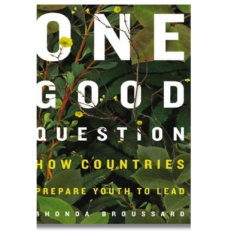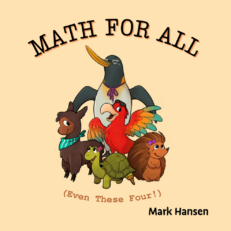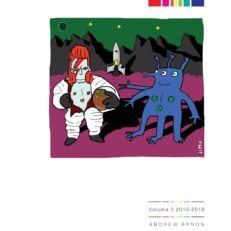In the summer of 2015, a group of parents at Kinderhaus, a German immersion preschool in Park Slope, Brooklyn, found themselves discussing elementary school options. Every parent in the group hoped for their children to continue on in both German and English. Some happened to be familiar with Sylvia Wellhöfer, a German mother who lived nearby and hoped to develop the first German dual-language program in a New York City public school. After making the connection, Sylvia and the Kinderhaus parents joined forces, with Sylvia and Celine Keshishian, an American mother of a bilingual child, taking the lead. To gauge interest among families in contact with the group, a kick-off event was organized a few weeks later. Project team leaders were appointed to help with the school search and parent recruitment, and a strategic plan was drawn up. The group was quickly joined by influential allies, notably Katja Wiesbrock-Donovan, head of the cultural section at the German Consulate in New York, and Andrea Pfeil, director of the language department at the Goethe Institut, a German cultural center. In addition to their expertise, these allies helped spread word of the initiative throughout the German community in New York’s five boroughs.
German Roots in America
With increasing numbers of German-speaking families living in Brooklyn, the city recently recognized the need to include German in the school curriculum. New York City’s German-speaking community is large and diverse, and is made up of Germans, Austrians, Swiss, Belgians, Alsatians, Luxembourgers, Northern Italians, and German-Americans. Germans actually represent one of the largest heritage language groups in the United States, and many Americans of German ancestry have a vested interest in maintaining their language and culture. However, keeping this heritage alive has historically been a challenge for the German community in the United States, since doing so used to carry many negative biases and prejudices. For those who came to the United States during the post-war era, this meant assimilating into
American culture and possibly even hiding the fact that they spoke German, particularly for the sake of their children at school. This intentional suppression of German, and harbored post-World War II anti-German sentiment, impacted the way the German language was viewed and preserved in the United States, including in New York City. Fortunately, over time, this view has largely dissipated as attitudes have changed.
The current desire to maintain German culture in the United States emanates in part from German social clubs and societies that, from Queens and Long Island, down to Philadelphia, and up to Connecticut, remain active to this day. These groups organize events attended by third- and fourth-generation Germans. For example, Deutscher Verein—the second oldest German social club still in existence in New York City—was founded in 1842, its membership originally restricted to businessmen. It boasts illustrious members such as Frederick August Otto (FAO) Schwartz, Emile Pfizer, and the Steinway brothers. Although club members might not always speak German to each other in this day and age, they remain active participants in sustaining their cultural heritage.
German heritage in New York is now apparent in only a few traditional establishments, such as the butcher Schaller & Weber, the Heidelberg restaurant, or the Kolping House youth hostel. Saint Paul, a 175-year-old German Evangelic Lutheran church in Chelsea, holds services in German and continues to bring young families into its longstanding congregation. The Steuben Parade on Fifth Avenue, where thousands of German-Americans sing songs and dress up in traditional costumes each year, also epitomizes the celebration of German culture in the city. While recent expatriates from Germany do not always relate to these traditions, all acknowledge the role they play in the fabric of New York’s German-American cultural heritage. German culture in New York is also currently witnessing something of a renaissance, especially in the restaurant industry, where younger generations have opened dozens of German-themed establishments in the last ten years.
Recently-arrived German families, many of whom are in the United States to advance their careers, are equally concerned about sustaining their language and culture. Several expatriate families in the parent group that did not plan to remain in the United States long-term began to consider extending their residency after hearing of the dual-language initiative, as they viewed local public schools as an excellent alternative to private German schools. This group of new immigrants represents an important part of the German landscape in New York, in tandem with the existing German heritage community. There are interesting cases of organizations that bridge these two groups in the New York City German community. CityKinder, for instance, an online-based cross-generational community of German speakers in New York, organizes an annual Easter Egg hunt, summer picnics, the Steuben Parade, and Fall in the Park, an event where families gather for kite flying, baked apples on the grill, fall crafts, and story time. Their biggest event is the Saint Martin’s Day lantern walk, when children make homemade lanterns and walk through Prospect Park singing traditional German nursery rhymes until they meet Saint Martin on horseback. To a certain extent, this organization has become a unifier for the German community in New York City, as German cultural centers, churches, and schools utilize it as a venue to promote their activities and reach younger families. It also played a critically important role in spreading the word about the German Dual-Language Program initiative—connecting families from various linguistic and cultural backgrounds to a project that had the potential to serve the
community in unprecedented ways.[1]
The German Dual-Language Program initiative came to comprise a multicultural, multilingual, and multinational group. Like the borough of Brooklyn where they lived, they represented a wide range of ethnicities, professions, and interests, from entrepreneurs and managers to artists and students. Some of the families were monolingual English-speaking Americans. Some came from immigrant backgrounds—including those who came to make a life in the United States and others who eventually decided to stay. Often, families in the German dual-language group spoke English at home, regardless of whether or not it was their mother tongue. Everyone came from different religious and socioeconomic backgrounds. This diversity contributed to the strength of the German dual-language program.
Action
The German Dual-Language Program group’s attempt to define a strategy from the start was an important factor in its success. The planning team used a “milestone” approach, setting deadlines and objectives to move the project forward in a timely manner. For example, the team decided that the group would need to choose a school by December in order to have sufficient time to register students by September of the following year. In addition, the outreach committee had to work ceaselessly to sell the program, as not all schools contacted were receptive to the idea or understood the benefits of dual-language education for their students and school community. For some school leaders, this was a challenge because it forced them to step out of their comfort zone.
Still, the group marched on, documenting the work that they would later present to the interested parents they represented. Sylvia Wellhöfer describes the first steps taken by her team:
Initially, we followed the roadmap of the French program and adjusted when necessary. We did not define a district in the initial phase and did not focus on institutions as much as on the parents. We focused on creating a database to argue our case and determine the number of English Language Learners. Our database included personal information, but only a few people had access. This was very useful. After the kick-off meeting, we defined three sets of parents and reached out to the schools and decision-makers in the district. We compiled all the data in a joint document to be able to compare the schools and keep each other informed.
The group’s goal was to find fifteen German-speaking children and fifteen non-German-speaking before presenting their case to school authorities. To meet New York City requirements, they also needed to determine the number of children by school zone who were considered English Language Learners that would fit the program profile. The diversity of families interested in their initiative was a
significant asset to achieving their goals, as children and parents had various levels of exposure to English and German.
From the start, the German Dual-Language Program group communicated regularly with all involved parties and developed a strategy to recruit parents who were committed to enrolling their children in the program. To find an appropriate school site, the group targeted three neighboring districts in Brooklyn and formed three independent working groups that researched each district and developed new suggestions tailored to each community based on the data that they had gathered. Although the group hoped to establish multiple programs in various neighborhoods over the course of several years, they did not want to compromise their initiativeor misuse their volunteers’ time and energy by trying to move in numerous directions at the same time.
With a target opening date in mind, the school search team had to make a final decision as to where to concentrate the group’s efforts based on key elements such as the level of support from the school’s administration and the availability of classroom space. The selected school needed to be easily accessible and prepared to handle the multitude of challenges that inherently come with the opening of a new dual-language program. The merits of each potential school visited by group leaders were shared with interested parents. The teams were also aware that under-utilized schools had the most to gain from a dual-language program, as these types of programs typically attract a wealth of new students and invested parents. New families are often eager to volunteer, help in the library, write grants, or acquire additional classroom resources. The growth in the school’s population that customarily follows the establishment a dual-language program also guarantees additional funding from the City and the State Departments of Education. These factors, along with administrations’ receptiveness to the idea of a dual-language program at their school, shaped the German Dual-Language Program group’s decision-making process.
An Organized and Efficient Strategy
It was important for the German Dual-Language Program founders to be clear and upfront about their strategy at all times. Five private German schools in New York City were already in existence before the initiative began, three of which were in Brooklyn. The German Dual-Language Program leaders did not want to compete with these institutions or put themselves in a situation where their initiative would appear threatening to them. The group strongly believed that there was a need for a diversity of programs within the community, and saw their efforts to establish a dual-language program in a public school as complementary to the offerings of the private schools already in existence. The group was very careful to not amplify unnecessary tensions in an already challenging undertaking. Depending on the individual families’ needs, they even suggested the private school option first to some parents who could afford it. This collaboration and the backing of the private school programs ensured that a public school dual-language program would be a welcome addition to the community.
Our group knew that they had to build trust and maintain a vast network of contacts while remaining consistent in their strategy, following up on suggestions, and ensuring that individual requests from parents were taken into consideration. Sylvia Wellhöfer explains: I am very process-oriented. I am sure there is another way of doing it, but I always saw it as setting up a company or NGO without any funds.
We launched a Facebook page and designed a logo and a website. When it was very important, I sent follow-up emails or phone calls. We communicated about the German Dual-Language Program via CityKinder, a German online platform, the German Consulate’s newsletter, and the newsletter from the Goethe Institut. We also put up some fliers and tried to spread the word at playgrounds or functions that we attended. [1]
Parents regularly participated in open houses, met at local cafés, and conversed at the playground. The flow of information was constant. The partnerships the group built also reinforced the initiative’s credibility and effectiveness. The Goethe Institut, for instance, offered to provide all classroom materials and reached out to its network of teachers for resources, curriculum development, and resumes. Connections were also made with schools that had more established programs such as the French dual-language program at P.S. 110 and the Japanese dual-language program at P.S. 147, in order to pass on lessons learned and useful tips for starting their own program.
When Disappointment Strikes
Thanks to the data they were able to compile and their clear communication with stakeholders, the German Dual-Language Program group was able to obtain an initial agreement from P.S. 17 in Brooklyn. Our highly-organized group of parents then sought out families that would enter Kindergarten at the same time, reaching out to groups in various school districts in Brooklyn and Queens. Unfortunately, a few weeks before the new school year began, it was determined that too many families had dropped out to meet the September deadline. The German dual-language initiative at P.S. 17 subsequently did not materialize due to a reluctance on behalf of the school administration, as well as administrative hurdles that proved difficult to clear. In this case, as in most stories discussed in the book, it is important to secure commitment from parents and make sure they remain interested in the dual-language initiative. It is also important for group leaders to remain persistent and focused on finding a school, as this group did.
With the strong support of the district superintendent, the German Dual-Language Program team and the school leadership looked into several new options to open a German dual-language program. This resulted in beginning an after-school enrichment program in German for pre-Kindergarten and Kindergarten classes at a neighboring school, P.S. 18,, thus offering an opportunity to incorporate German content into the curriculum and maintain a link to German language and culture at the school. Much to their credit, the German Dual-Language Program team’s efforts laid the groundwork for a German dual language program at P.S. 18. By staying true to its mission to bring a bilingual program in German and English to New York public schools, the group’s perseverance is certainly exemplary and a positive indicator of more success to come.
The parents involved with the German dual-language initiative formed a well-organized group that designed a remarkable strategy to find schools and recruit families, and kept communications between parties clear at all times. They were open to attracting non-German speakers in the group. They were careful to work with private schools and cultural organizations as partners, not competitors. Although several families were frustrated that the program had to be postponed, much has been accomplished and hopes to see more German dual-language programs emerge in New York remain high. In an organized and well thought-out fashion, the groundwork for a successful German bilingual revolution has been prepared.
















